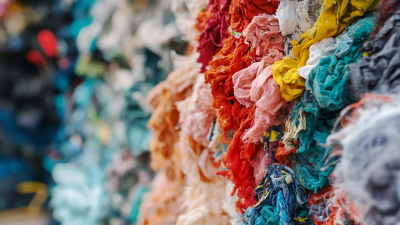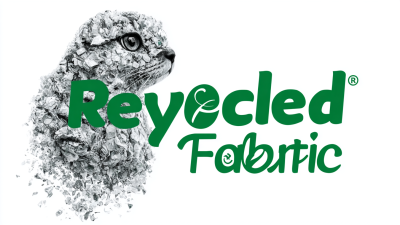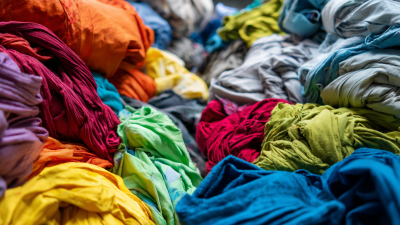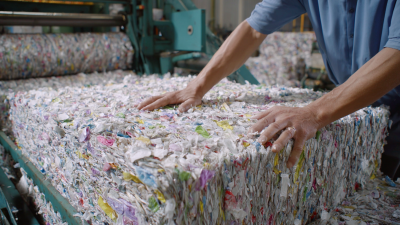In an era where sustainability is becoming increasingly vital, the choice of materials in fashion plays a critical role in reducing environmental impact. One such material gaining prominence is Recycled Nylon Fabric, a sustainable alternative that not only repurposes waste but also offers excellent quality and performance. As consumers become more conscious of their purchasing decisions, understanding the nuances of recycled fabrics is essential for making informed choices.
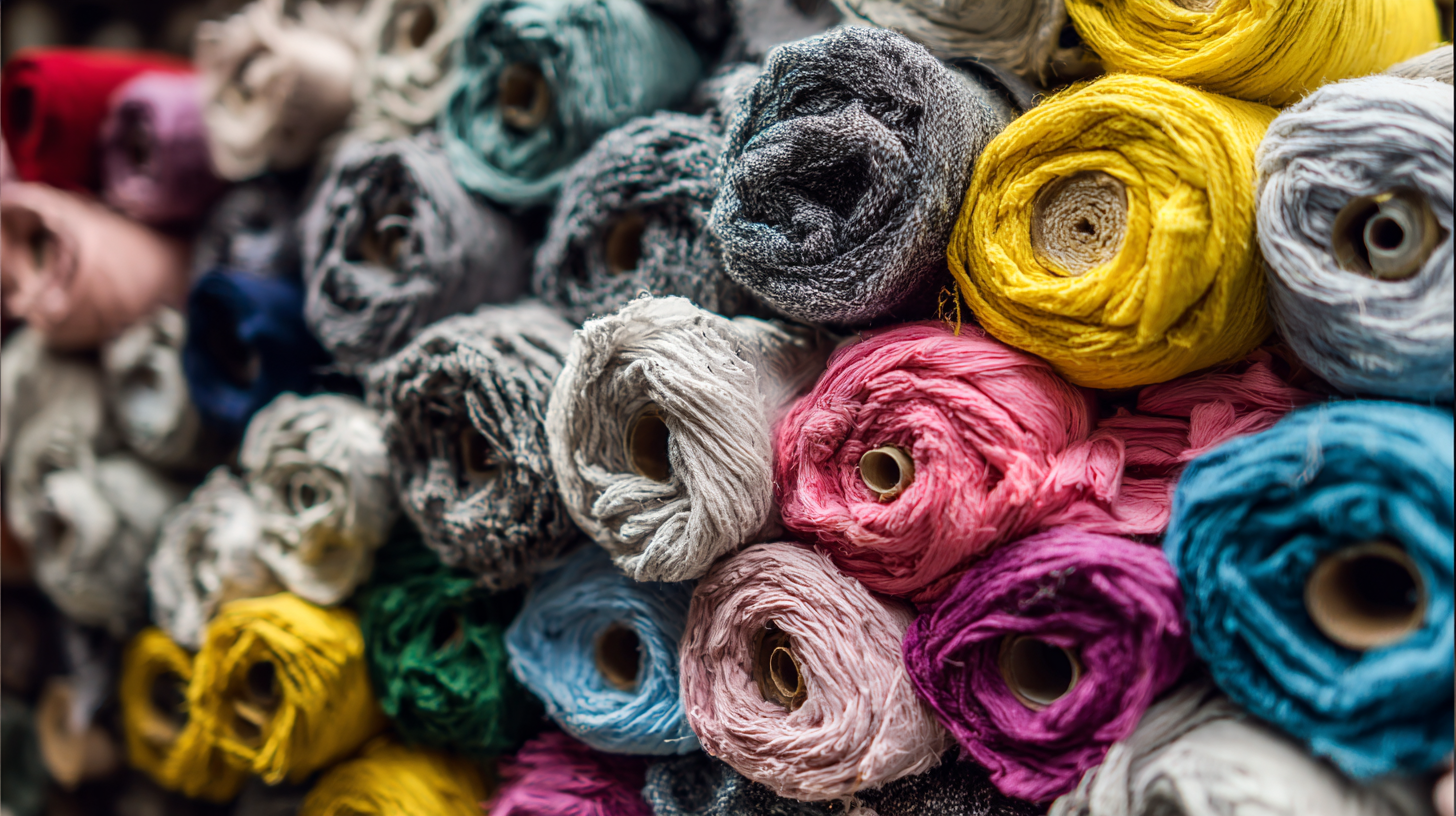
This article presents seven essential tips for selecting the best Recycled Nylon Fabric, ensuring that your fashion choices align with your values. From evaluating the sourcing and production processes to considering the fabric's durability and versatility, these insights will empower you to invest in eco-friendly garments that contribute to a greener future while still adhering to your style preferences.
Embrace the journey towards sustainable fashion with knowledge that makes a difference.
Recycled nylon is becoming an essential material in sustainable fashion, offering various environmental benefits. This innovative fabric is made from post-consumer waste, such as old fishing nets and fabric scraps, effectively reducing landfill waste and the need for virgin resources. By choosing recycled nylon, consumers can help decrease the environmental impact associated with nylon's traditional production, thus supporting a circular economy.
When selecting the best recycled nylon fabric for your sustainable wardrobe, it’s crucial to consider several factors. First, check the certifications of the fabric to ensure it meets sustainability standards, such as GRS (Global Recycled Standard). Second, assess the durability of the fabric; high-quality recycled nylon should maintain strength and withstand wear and tear, promoting longevity in your garments. Look for brands that prioritize ethical manufacturing practices, ensuring that workers are treated fairly throughout the production process.
Additionally, consider the fabric's versatility and performance. Recycled nylon can be used in various applications, from activewear to casual clothing. Opt for fabrics that offer moisture-wicking, breathability, and UV protection, ensuring that your garments are not only sustainable but also functional for everyday wear. By focusing on these attributes, you can make informed choices that align with your sustainable fashion goals.

When selecting recycled nylon fabrics for sustainable fashion, identifying quality indicators is crucial. First, assess the fabric’s durability. Quality recycled nylon should have a robust structure, providing resistance to wear and tear over time. Look for certifications or labels that indicate rigorous testing standards have been met, as these can provide assurance of the material's longevity and performance.
Another key indicator is the texture and feel of the fabric. High-quality recycled nylon should exhibit a soft yet strong hand, allowing for comfortable wear. Additionally, consider the fabric's environmental impact during production. Patterns like GRS (Global Recycled Standard) certification can help identify materials that not only meet recycling criteria but also adhere to stringent ecological and social standards. By focusing on these indicators, consumers can make informed choices that contribute to a more sustainable fashion industry.
| Quality Indicator | Description | Sustainability Score (1-10) | Durability Score (1-10) | Softness Rating (1-10) |
|---|---|---|---|---|
| Recycling Process | Ensures that nylon is sourced from post-consumer waste materials. | 9 | 8 | 7 |
| Material Composition | 100% recycled nylon vs. blended materials for reduced environmental impact. | 8 | 9 | 8 |
| Certifications | Look for certifications such as GRS (Global Recycled Standard). | 10 | 7 | 6 |
| Production Process | Assess if eco-friendly dyes and processes are used. | 9 | 8 | 7 |
| Fabric Weight | Affects durability and suitability for different clothing styles. | 8 | 9 | 8 |
| Color Fastness | Resistance to fading and color run during wash. | 9 | 8 | 7 |
| Breathability | Impact on comfort and temperature regulation. | 8 | 9 | 8 |
The production of recycled nylon represents a significant opportunity for mitigating the environmental impact associated with traditional nylon manufacturing. This sector is experiencing notable growth, influenced by increasing consumer demand for sustainable fashion and the growing awareness of the negative environmental effects of textile production. As the market for recycled nylon expands, it is crucial to understand its scale, market share, and prevailing trends. These trends indicate a shift towards more responsible sourcing practices and the adoption of innovative recycling technologies, paving the way for a more sustainable fashion industry.
Recycled nylon not only helps reduce waste by utilizing discarded materials but also minimizes the energy and resources required for producing new synthetic fibers. This transition is particularly important for the fashion industry, which has long been criticized for its detrimental impact on the environment, including pollution, resource depletion, and poor labor conditions within its supply chain. By prioritizing the use of recycled nylon and promoting ethical production practices, brands can address these sustainability challenges while appealing to a conscious consumer base that values environmental stewardship.
When selecting recycled nylon fabric for sustainable fashion, understanding the relevant certifications and standards is crucial. Organizations like Global Recycled Standard (GRS) and Oeko-Tex Standard 100 provide guidelines that help consumers determine the sustainability and safety of textile products. According to the 2021 Textile Exchange report, the demand for recycled nylon is growing, with a notable increase of 16% in production from 2020. Ensuring that your fabric is certified can validate its eco-friendly claims and contribute to a more circular economy.
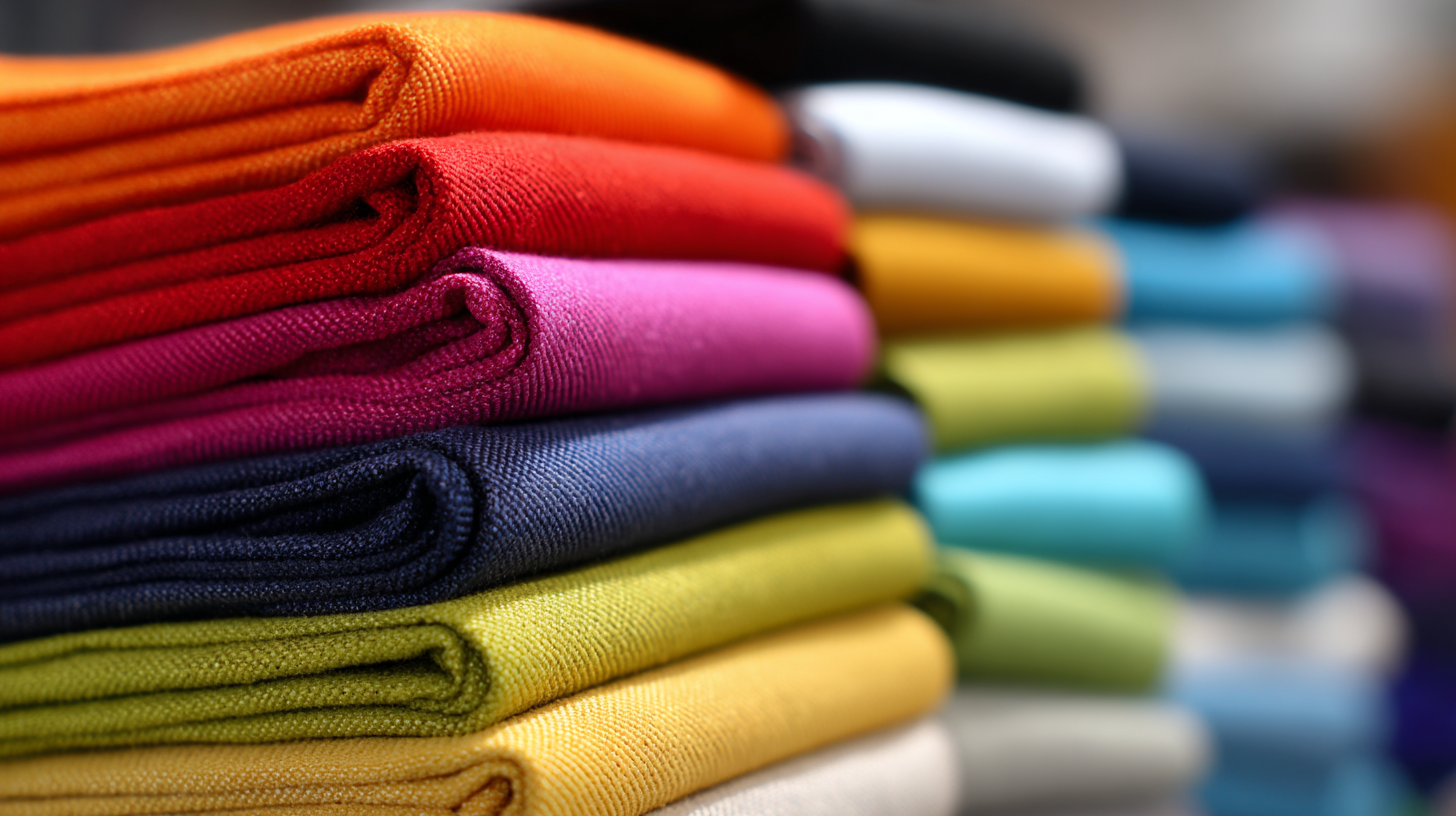
When considering recycled nylon, one essential tip is to look for fabrics labeled with credible certifications. Certifications not only signify compliance with environmental standards but can help trace the fabric's lifecycle. Another key point is to pay attention to the sourcing of the recycled materials; nylon made from post-consumer waste, such as discarded fishing nets, tends to have a lower environmental impact. Additionally, researching the fabric's durability can ensure that your purchase contributes to sustainable practices by reducing the need for frequent replacements.
By exploring these important certifications and adhering to these tips, you can make informed decisions that support sustainable fashion while minimizing your ecological footprint.
Finding reliable suppliers for recycled nylon fabric is crucial for making sustainable fashion choices. As the shift towards a circular economy gains momentum, it’s essential to partner with companies committed to eco-innovation. A recent report highlights that the global demand for sustainable textiles is projected to reach $8.25 billion by 2025, indicating a significant opportunity for those in the clothing industry to invest in responsible sourcing.
When choosing recycled nylon, consider suppliers who prioritize transparent and ethical production processes. Look for certifications that validate the sustainability of their materials, as well as their commitment to reducing waste in their operations. Additionally, research the lifecycle of the fabric, including its recyclability, to ensure it aligns with your sustainability goals.
A few tips for selecting the best recycled nylon fabric include evaluating the environmental impact of the manufacturing process, seeking suppliers that offer closed-loop systems, and focusing on brands that value traceability in their supply chains. As consumer awareness grows, it’s vital to choose partners who not only improve the quality of their products but also contribute positively to the planet.
